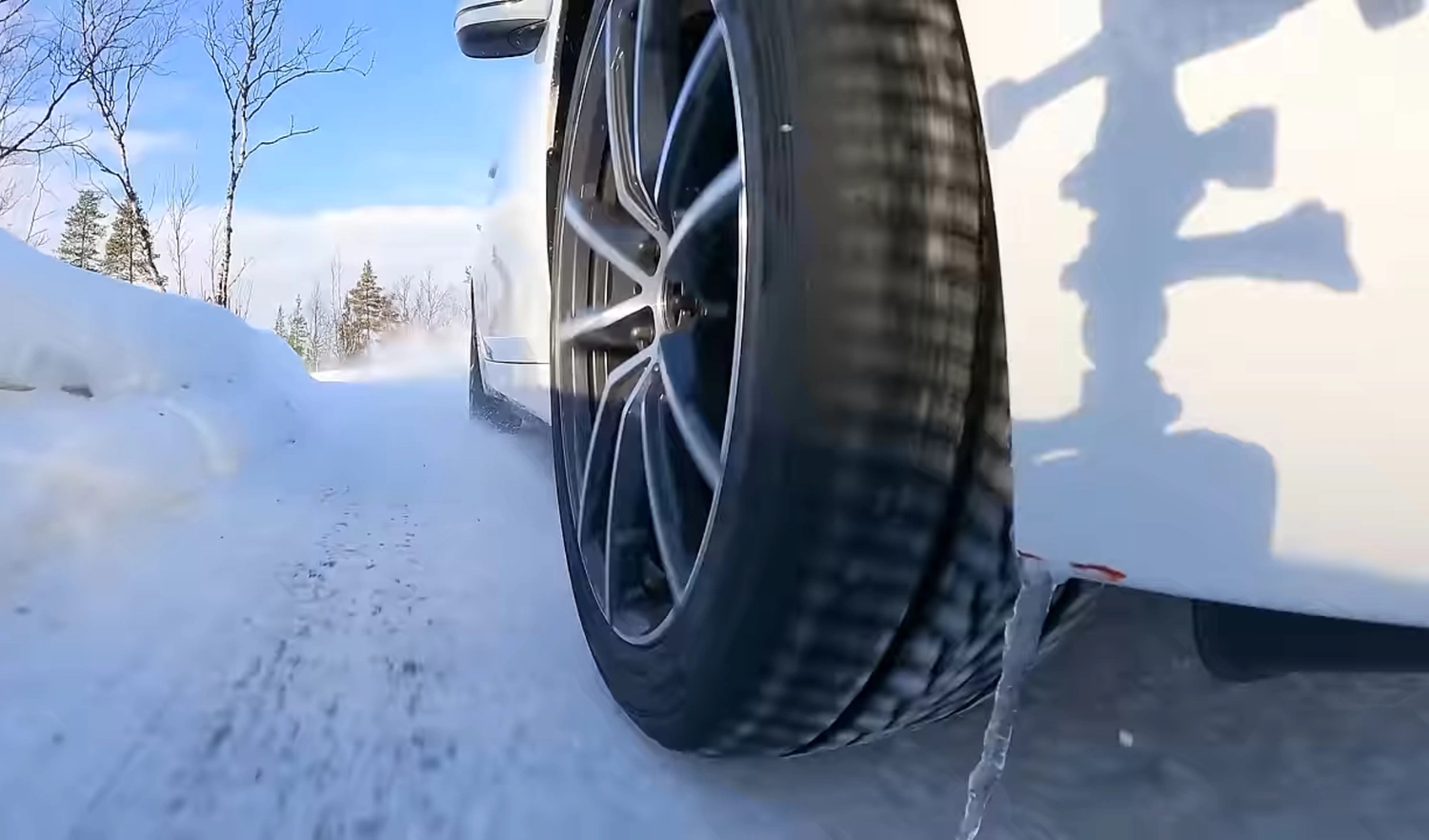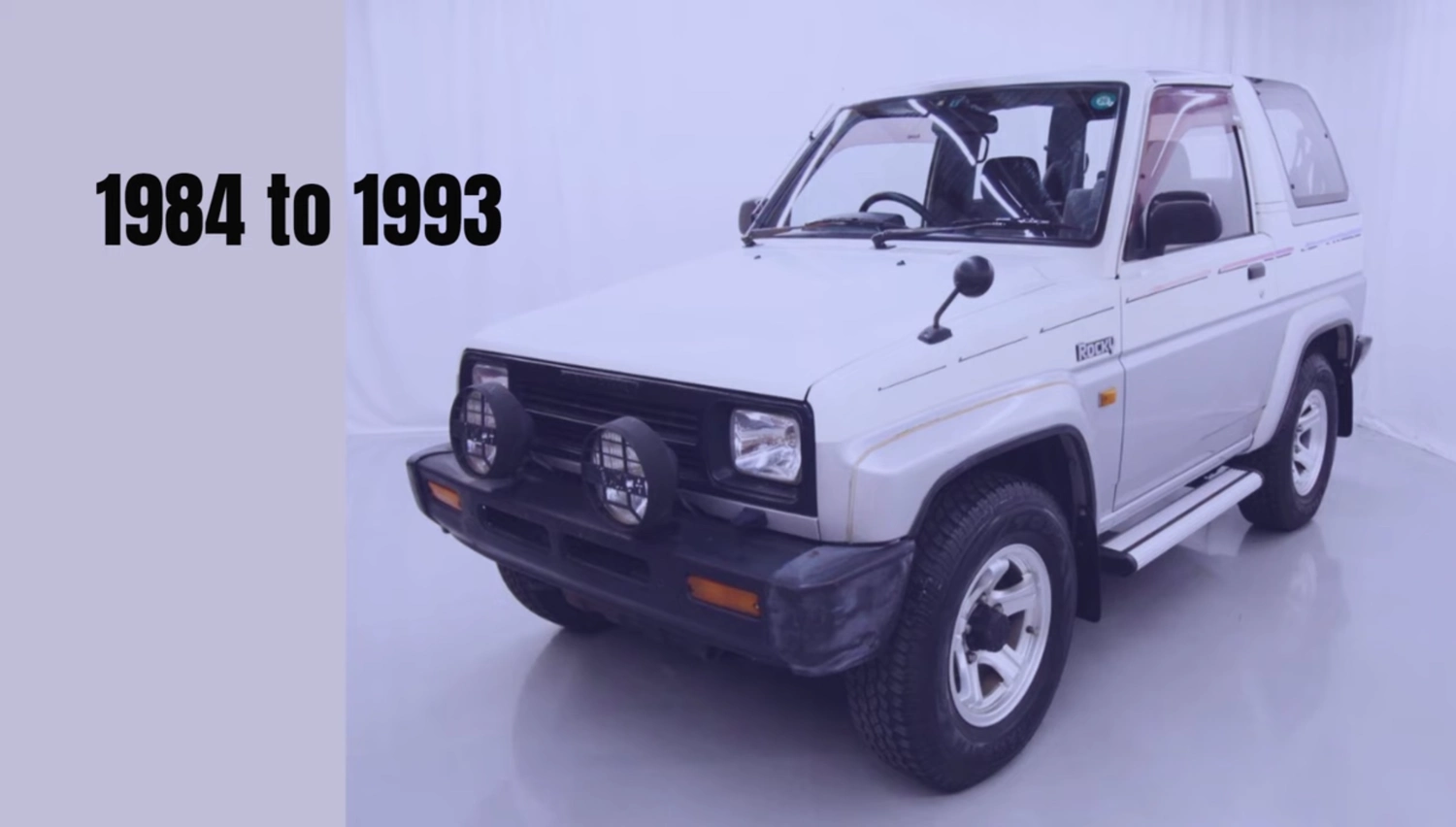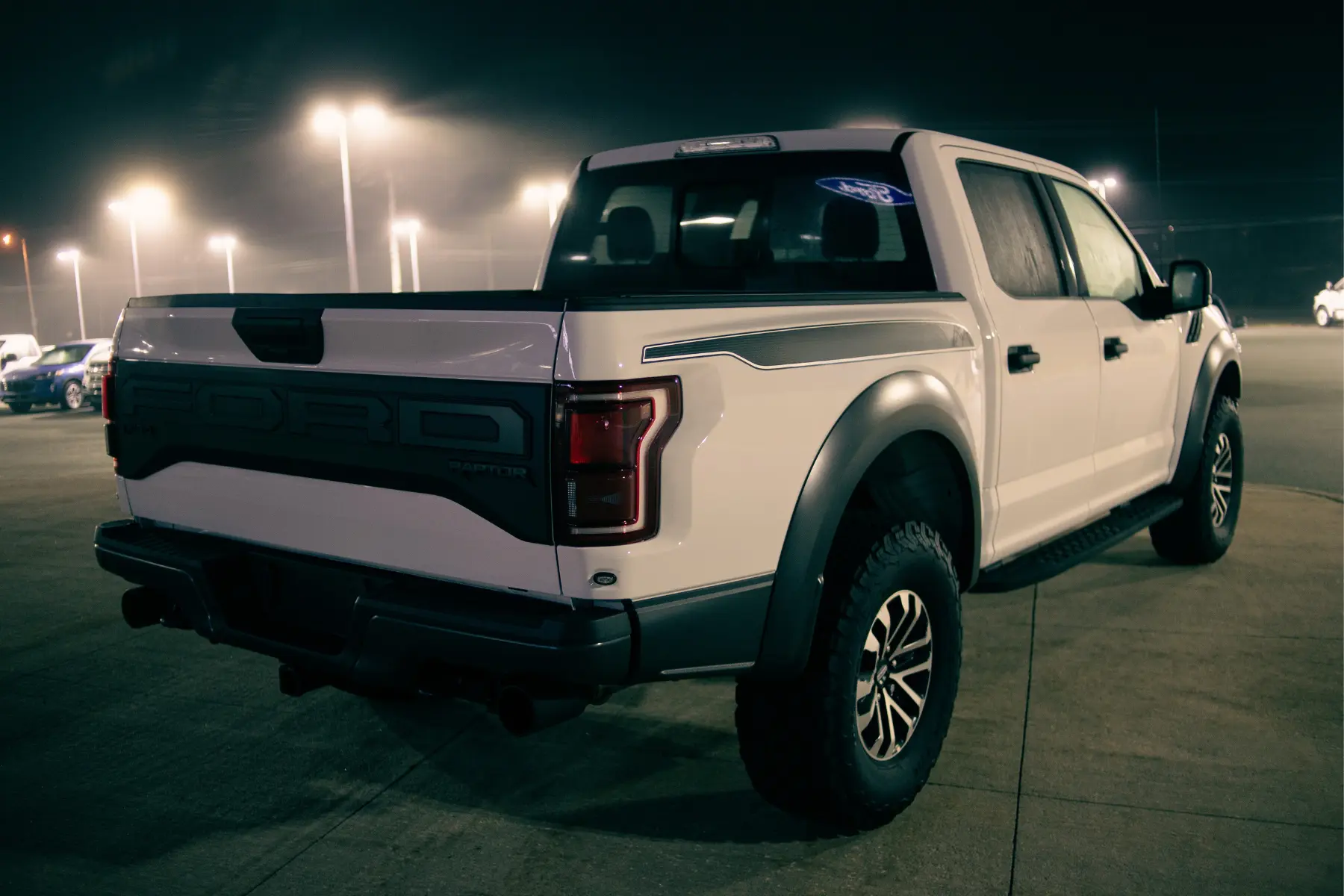It’s one of the internet’s oldest and most contentious automotive debates, and it resurfaces every winter like clockwork: Are narrow or wide winter tires better on snow and ice?
There are two competing theories, both of which have merit. The first is the classic argument from so-called internet experts: a narrow tire applies more pressure on the surface, increasing grip by pressing through the snow to the surface below. This makes sense from a physical grip standpoint, but it ignores an essential fact—tires generate grip through more than just pressure. Chemical grip, footprint shape, and tread design also play a crucial role.
The opposing theory is that a wider tire puts more rubber in contact with the surface, leading to more grip through a greater number of sipes (the small cuts in a winter tire’s tread) and a larger surface to pack snow into the tread. Since snow grips snow effectively, this could offer an advantage.
So, which one is right? To find out, we ran a full winter tire test on a BMW 3 Series, comparing a narrow 205mm tire on a 16-inch wheel against a wide 275mm tire on a 19-inch wheel, with a few intermediate sizes in between. Thanks to Hankook for providing the tires and making this test possible.
It’s time to settle this debate once and for all.
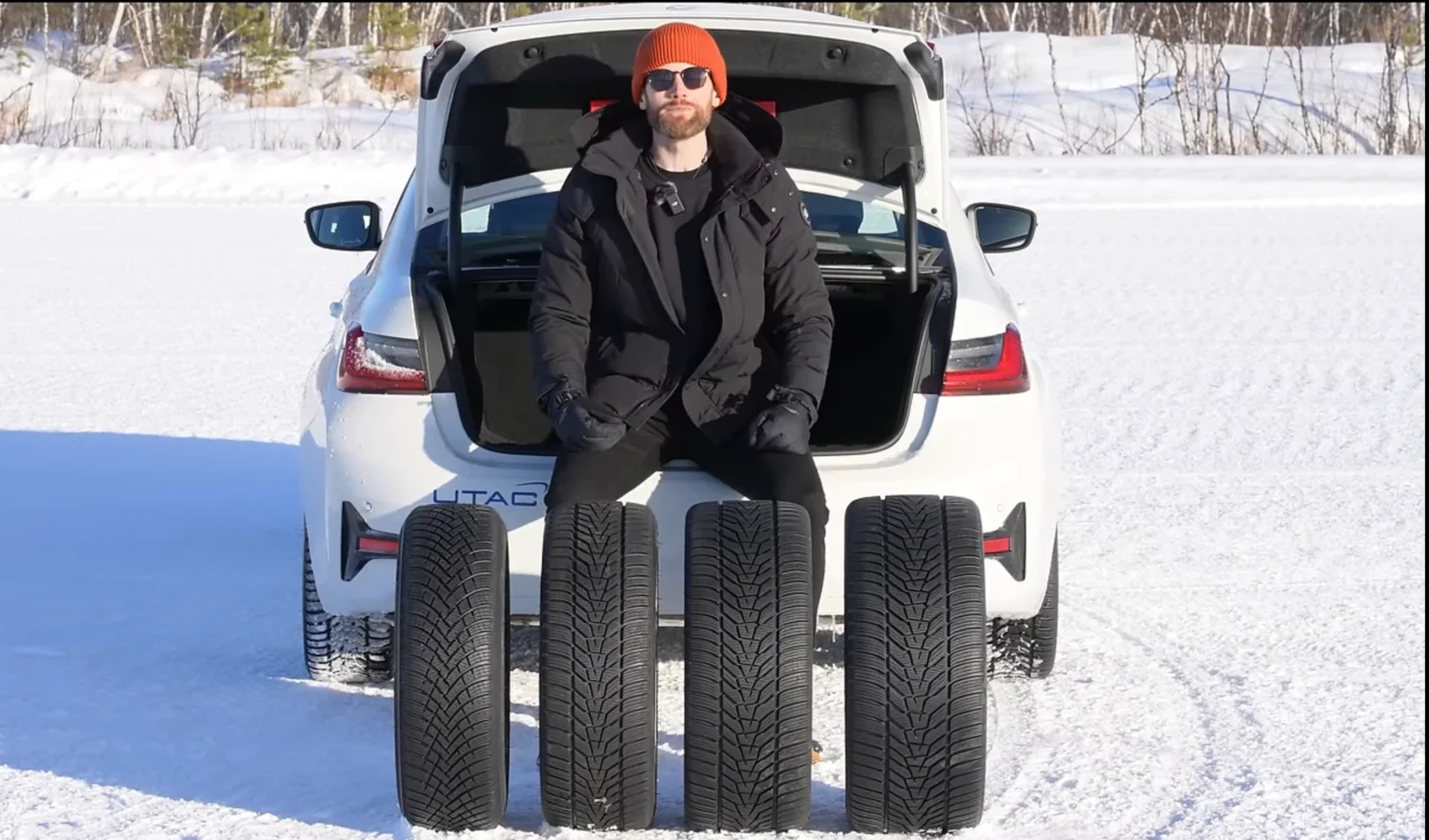
The Test: From Skinny to Wide
We tested four configurations:
- 205mm tire on a 16-inch wheel
- 225mm tire on an 18-inch wheel
- 255mm tire on a 19-inch wheel
- 275mm tire on the rear axle only
This allowed us to compare performance across different widths, from the skinniest option to an aggressively wide winter setup.
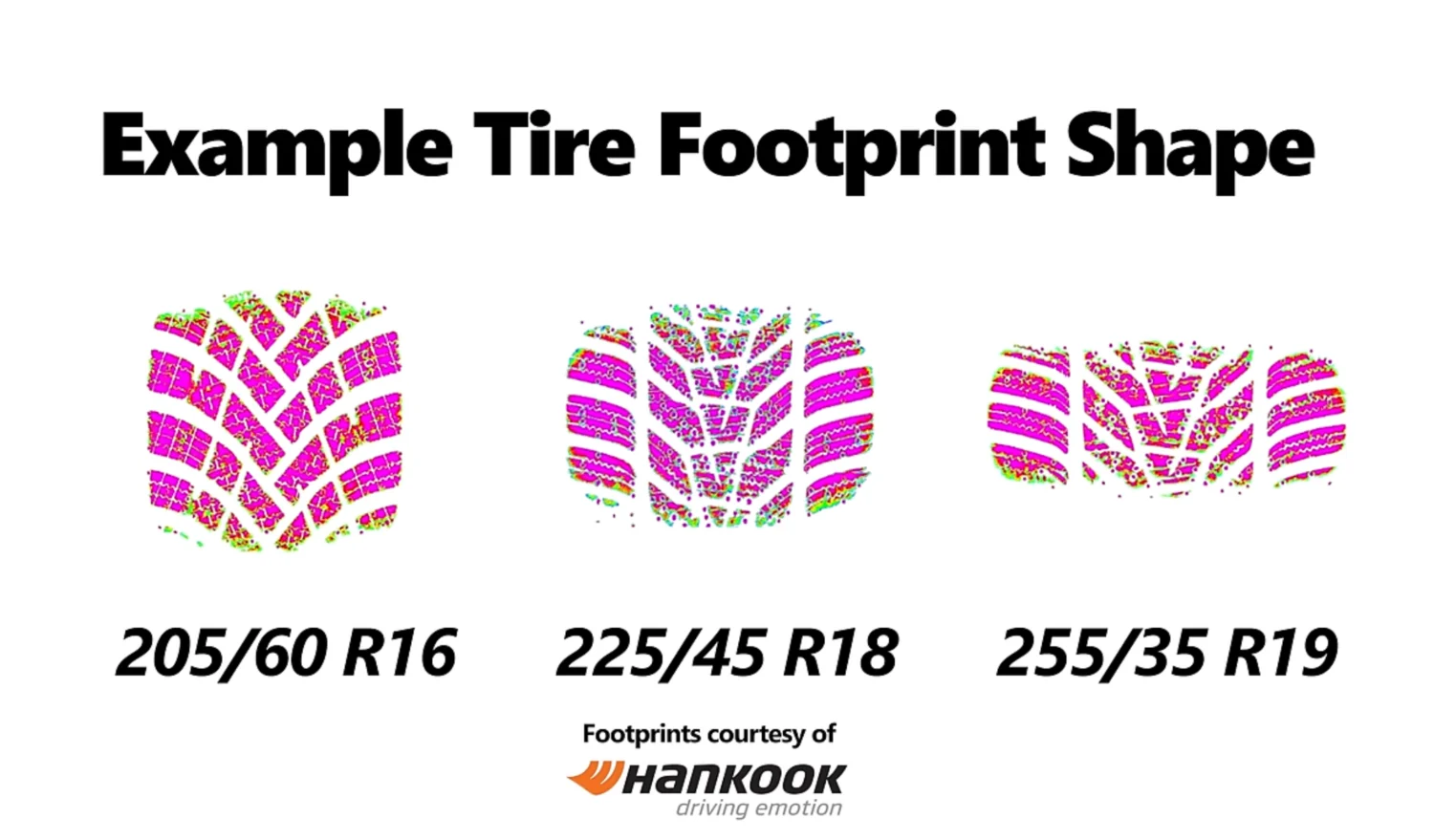
Snow Handling: Does Width Matter?
The narrowest 205mm tire felt surprisingly good. Grip levels were high, and the car felt stable, particularly over bumps and uneven snow. However, steering felt disconnected, and there was a noticeable delay in turn-in response.
The 225mm tire was the biggest subjective improvement. Turn-in was sharper, and the car felt more connected to the road, but it also picked up understeer slightly quicker. Still, the differences were small.
Moving up to 255mm, the steering became even more direct, but the transition from grip to sliding was more abrupt. Wider tires require finer inputs to manage, and once the limit is exceeded, they let go quicker.
With the 275mm tire on the rear axle, things got interesting. The balance improved slightly, making the rear end more controllable. Instead of breaking loose suddenly, it slid more progressively, making the car easier to manage in oversteer situations.
But what about the numbers? Lap times between the narrowest and widest tires were nearly identical, with only a 1.8% difference. Shockingly, the 225mm tire was actually the quickest, proving that there’s no clear handling advantage for either wide or narrow winter tires.
Traction & Braking: The Real Decider
While handling differences were minor, traction and braking painted a clearer picture.
Snow Traction (0-35 km/h Acceleration Test):
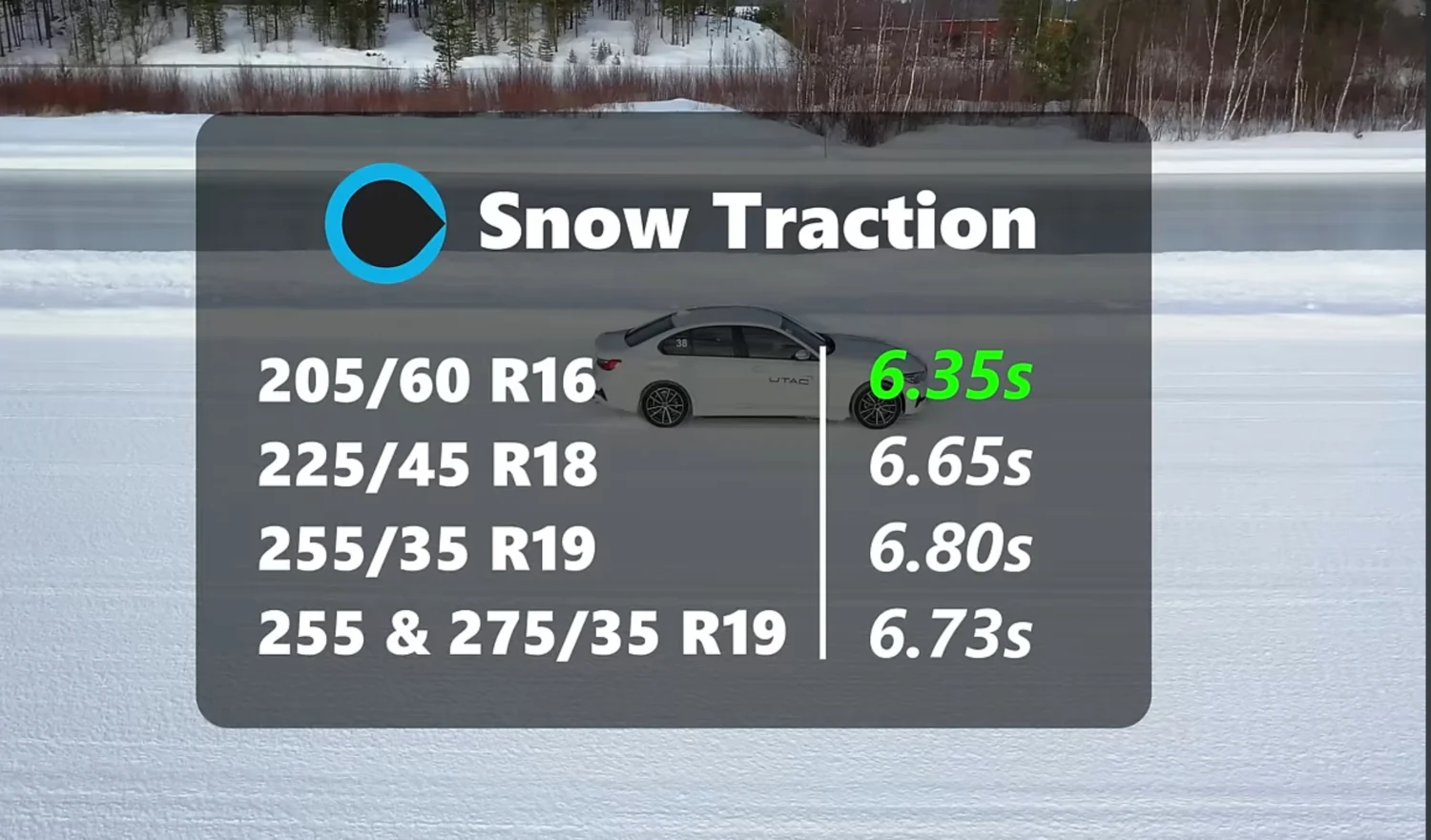
- Best: The 205mm tire had the best acceleration, completing the test 5% faster than the 225mm and 6% better than the 255mm and 275mm options.
- Worst: The 275mm tire struggled the most, showing that narrower tires bite into snow better when accelerating.
Snow Braking:
- Surprise result: The 225mm and 255mm tires stopped the quickest, while the 205mm tire was the worst, 4.5% behind.
- Why? It turns out braking performance does not follow the same rule as acceleration. Instead of digging into the snow for grip, wider tires provide more surface area for braking force.
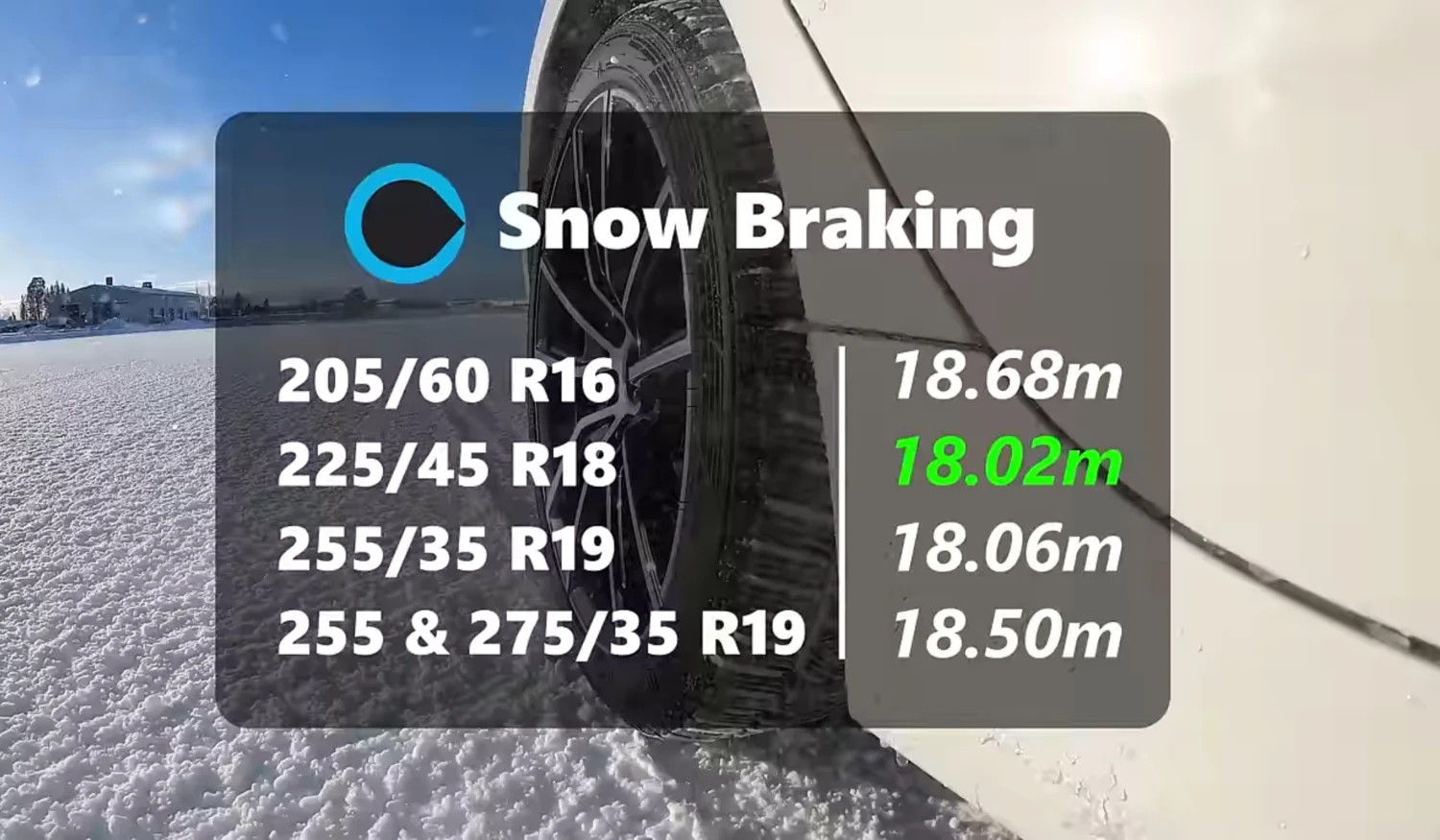
Ice Testing:
- The narrow 205mm tire was again the best for traction.
- But it was also the worst for braking—mirroring what we saw in snow.
- Interestingly, the widest 275mm tire performed second-best overall, showing that width helps more on ice than it does in snow.
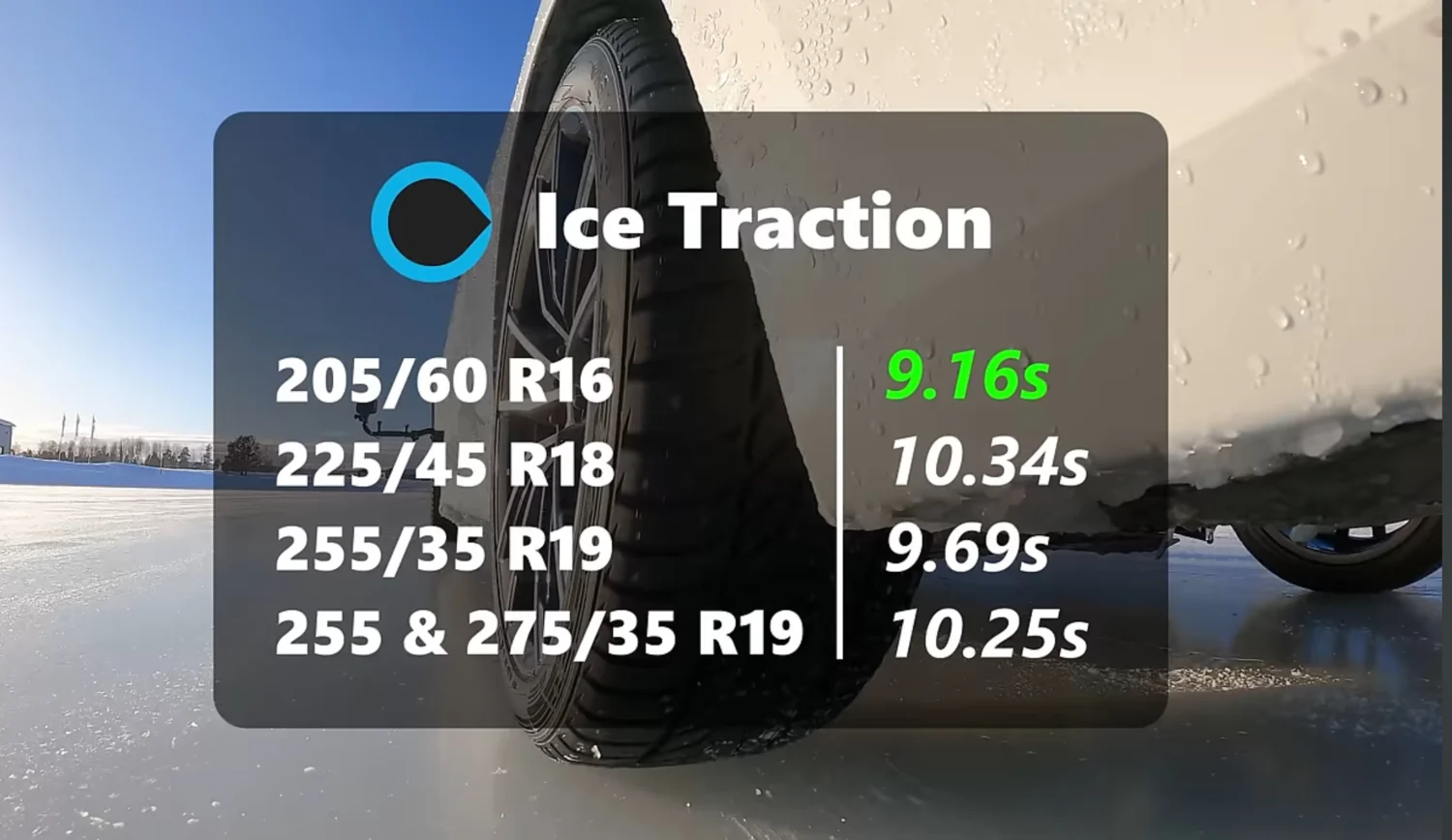

The Final Verdict
Looking at all the data, here’s what we learned:
- Handling? Doesn’t matter much. The differences were so small that picking between a narrow or wide winter tire won’t affect your winter driving experience. A good winter tire matters more than its width.
- Traction? Narrower tires are better. They dig into snow and ice more effectively, helping with acceleration.
- Braking? Wider tires are better. More contact area means better stopping power, which is arguably more important than acceleration.
But here’s the key takeaway:
The difference between a bad and a good winter tire is far bigger than the difference between a narrow and a wide one.
Should You Go Narrow or Wide?
For most people, tire width shouldn’t be your top concern when choosing winter tires. Instead, focus on getting a high-quality winter tire—something like the Hankook Winter I*Cept EVO 3, which we tested, or another top-rated model.

That being said, going slightly narrower in winter does have one real-world benefit—it allows you to downsize your wheels, which can protect your summer alloys from winter potholes.
So, if you’re debating between a 205mm or 225mm tire—don’t sweat it. Get the best winter tire available, and you’ll be far better off than worrying about width.
Conclusion: The Real Key to Winter Performance
Forget the internet debates—our testing shows that tire quality matters far more than width. If you’re about to buy winter tires, spend your time researching the best-rated winter models, not obsessing over 20mm of width.
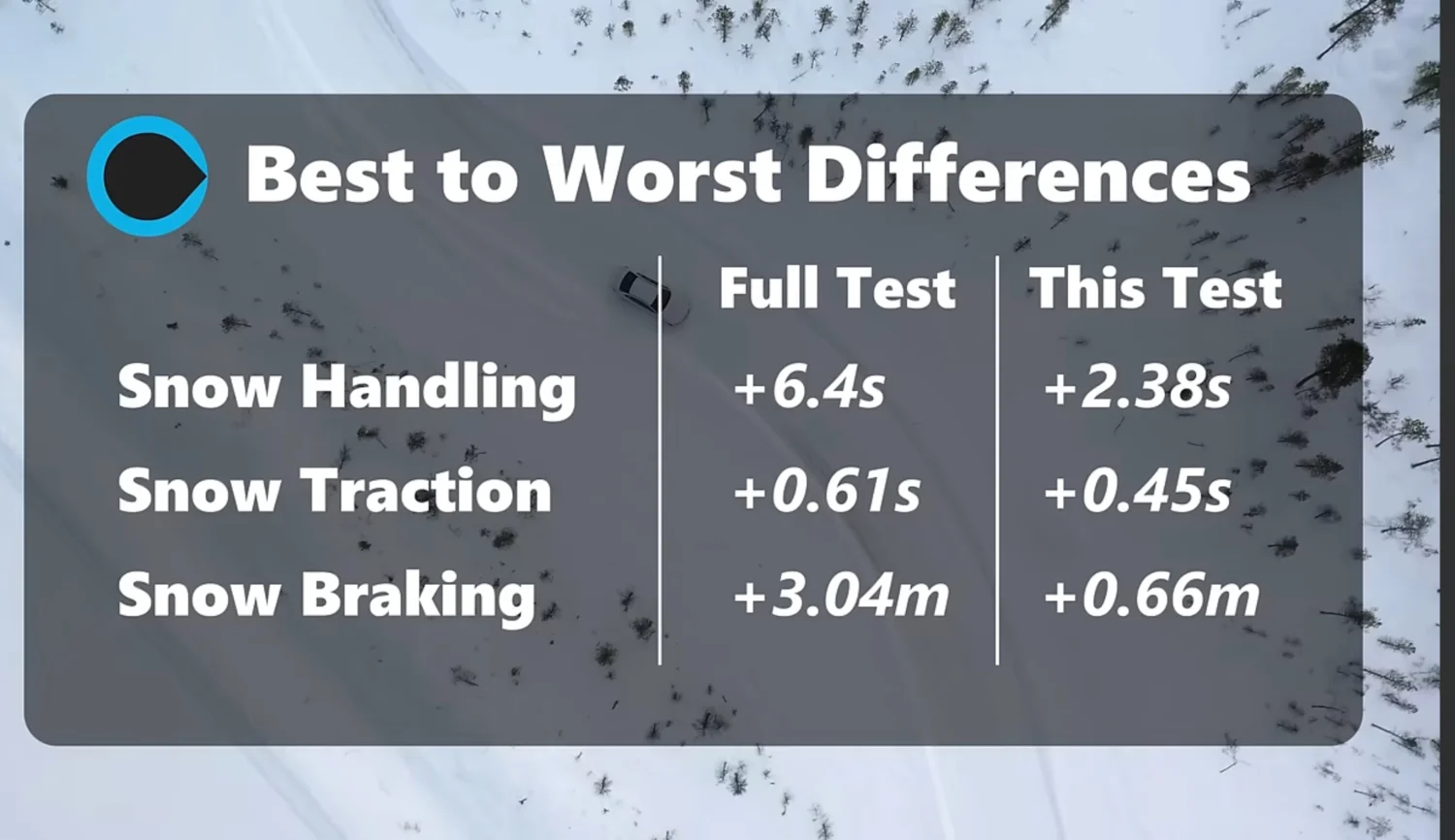
Want more independent tire testing?
Follow Tyre Reviews for the best real-world testing:
YouTube: Tyre Reviews
Website: tyrereviews.com
Instagram: @tyre_reviews
